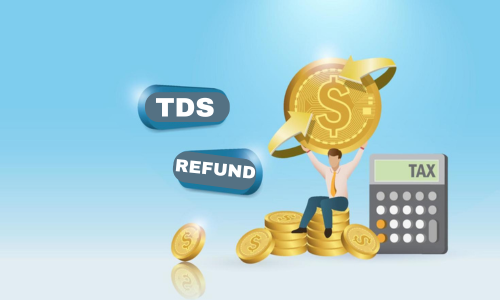In this article, we will discuss about...
Introduction
Navigating Indian tax laws as a Non-Resident Indian (NRI) can be tricky. One of the biggest concerns is Tax Deducted at Source (TDS). This is a tax deducted from your income—such as rent, dividends, or interest earned in India—before it even reaches you. For NRIs, the TDS rate is much higher than that for resident Indians, often leading to over-deductions.
Changes in TDS After Budget 2024
The Union Budget 2024 introduced several changes in TDS rules that directly impacted NRIs. If you earn income from India, you may notice higher deductions from your rental income, capital gains, and dividends. While these changes aim to simplify tax collection, they often cause NRIs to overpay tax upfront, leading to months of waiting to claim refunds.

So, what’s the solution? It’s called the Lower TDS Certificate.
What is a Lower TDS Certificate?
The Lower TDS Certificate ensures that the correct amount of tax is deducted from your income. Issued by Indian tax authorities, this certificate allows TDS to be deducted at a lower rate, closer to your actual tax liability.

For example, without this certificate, a 30% TDS might be deducted from your rental income, even if you only owe 10%. Without the certificate, you would need to wait months for a refund.
Why the Lower TDS Certificate is More Important After Budget 2024
The new regulations in Budget 2024 have made this certificate even more crucial for NRIs. Higher TDS rates on rental income and capital gains mean a larger part of your income might be withheld. This can hurt your cash flow, as more money gets deducted upfront than necessary.
With a Lower TDS Certificate, you can manage these deductions better, ensuring only the correct amount is withheld. This is particularly useful if you have multiple sources of income from India, such as rental properties, fixed deposits, or dividends.
Who Can Apply for a Lower TDS Certificate?
Not every NRI automatically qualifies for a Lower TDS Certificate. You can apply if you believe your tax liability is lower than the TDS being deducted. Some common income streams that may be eligible include:
- Rental income from property in India
- Interest on fixed deposits
- Capital gains from selling property or stocks
- Dividends from Indian companies

Additionally, if you’re using the benefits of a Double Taxation Avoidance Agreement (DTAA), a Lower TDS Certificate can further reduce your tax burden.
What is DTAA and How Can It Help?
The DTAA is an agreement between India and other countries that prevents the same income from being taxed twice. If you live in a country with a DTAA agreement with India, combining its benefits with a Lower TDS Certificate can simplify your tax situation.
For example, if you live in the U.S. and earn dividends from an Indian company, the DTAA might let you pay less tax. However, without a Lower TDS Certificate, higher tax deductions will still occur upfront.
How to Apply for a Lower TDS Certificate
Here’s how to apply for the certificate:
- Gather Financial Information: You’ll need details like your expected income and tax liabilities for the year.
- Fill Out Form 13: This is the key document for your application. Ensure all your information is correct to avoid delays.
- Submit the Form: You can submit it online (which is faster) or offline (which may take longer but is still an option).
When to Apply
The best time to apply is at the beginning of the financial year or before your Indian income starts coming in. If you delay, too much TDS might be deducted early on, making it harder to manage your cash flow.
Common Mistakes When Applying
Here are a few mistakes to avoid when applying:
- Misjudging your income and requesting too low a TDS rate
- Providing incorrect or incomplete documents
- Forgetting to account for all sources of income
These mistakes can delay or even result in the rejection of your application, leaving you stuck with high TDS deductions.
The Role of Form 13
Form 13 is your official request to reduce the TDS rate on your income. Fill it out carefully—mistakes in calculating your income or requesting the wrong TDS rate can cause unnecessary problems.

Online vs. Offline Application
You can apply for a Lower TDS Certificate online or offline. The online option is faster and easier to track, while the offline method may take longer to process.
What Happens if You Submit Incorrectly or Late?
If you submit an incorrect or late application, you could face serious delays. TDS deductions might continue at a higher rate, and it will take months to claim a refund. If your application is rejected, you’ll need to restart the process from scratch.
Handling TDS Refunds
If your TDS has been over-deducted, you’ll need to claim a refund. Unfortunately, this process can be long and slow, taking several months. This is why applying for a Lower TDS Certificate is so helpful—it avoids over-deductions in the first place.

Should You Seek Professional Help?
The process can be complicated, so many NRIs choose to hire a chartered accountant. A tax professional can help with paperwork, ensure everything is accurate, and guide you smoothly through the process.
Staying Compliant After Budget 2024
The new TDS rules after Budget 2024 require strict compliance. Failing to follow them can result in penalties. A Lower TDS Certificate helps you save money while ensuring you comply with the latest rules.
How a Lower TDS Certificate Saves NRIs Money
The financial benefits of the certificate are significant. Instead of paying too much tax upfront and waiting for a refund, you can keep more of your income immediately. For example, instead of paying 30% TDS on rental income, the certificate could reduce the rate to 10% or lower.
Conclusion
The Lower TDS Certificate is a must-have tool for NRIs, especially after the changes introduced in Budget 2024. It ensures you’re taxed fairly and avoids unnecessary deductions that can hurt your cash flow. Apply early, avoid mistakes, and seek professional help if needed. This will not only simplify your tax obligations but also save you money in the long run.

